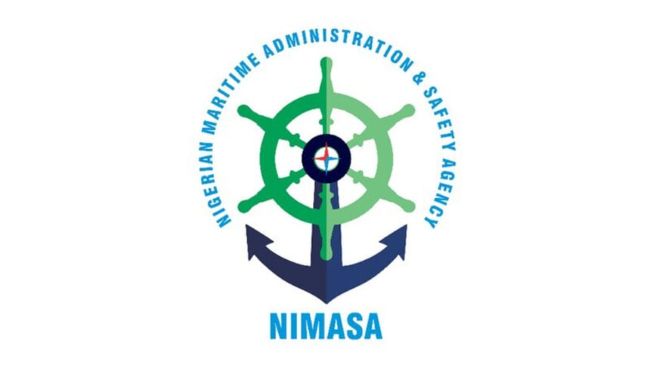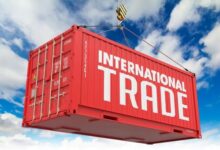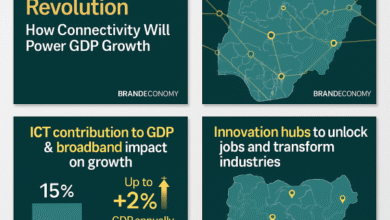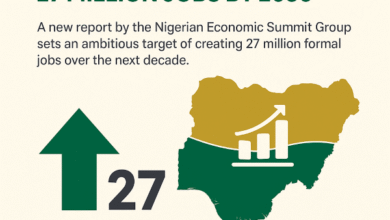CVFF Disbursement Begins: NIMASA Appoints 12 Banks, Sets Single-Digit Interest Rate in Maritime Finance Breakthrough

In a landmark move poised to reshape Nigeria’s maritime finance landscape, the Nigerian Maritime Administration and Safety Agency (NIMASA) has announced the appointment of 12 commercial banks as Primary Lending Institutions (PLIs) to disburse the long-awaited Cabotage Vessel Financing Fund (CVFF). The facility, which will be issued at a single-digit interest rate, is set to unlock long-denied capital access for indigenous shipowners under a framework designed to boost local content and deepen the blue economy.
The Director-General of NIMASA, Dr Dayo Mobereola, unveiled this during a virtual stakeholders’ forum on Monday, positioning the development as a pivotal achievement under President Bola Ahmed Tinubu’s Renewed Hope Agenda. With regulatory bottlenecks that have stalled the fund’s disbursement for nearly two decades now out of the way, Mobereola affirmed that this is not merely a disbursement programme—but a strategic economic stimulus for maritime growth.
“This marks the dawn of a new era. The CVFF will empower Nigerian shipping operators, enabling them to compete in a space hitherto dominated by foreign interests,” said Mobereola.
Strategic Financial Architecture with Strong Oversight
The CVFF, established under the Coastal and Inland Shipping (Cabotage) Act of 2003, is specifically designed to support vessel acquisition, ownership, operation, and management by Nigerians. The fund will now be accessible through banks including First Bank, Fidelity Bank, Zenith Bank, UBA, Jaiz Bank, and Lottos Bank, among others.
NIMASA, through a newly established Cabotage Unit and a dedicated Secretariat, is instituting rigorous oversight protocols. Applications will be processed based on clearly defined eligibility criteria, ensuring that only viable, compliant operators benefit.
The financial structure of the CVFF stipulates that beneficiaries must contribute equity, while NIMASA will co-finance up to 50% of the vessel cost, capped at $25 million. Notably, NIMASA will not release direct cash but instead facilitate credit through the selected PLIs. The loans, with a tenure of eight years, will be denominated in U.S. dollars—aligning with global industry standards to mitigate forex risk and ensure international competitiveness.
Implications for Banking and the Nigerian Economy
For Nigeria’s banking sector, the CVFF rollout introduces a niche lending stream backed by a federally-supported guarantee structure. It also signals increasing government reliance on public-private financial partnerships (PPFPs) to stimulate critical infrastructure and logistics sub-sectors. With proper risk management and credit screening by the 12 banks, the programme could redefine maritime asset financing in Nigeria—an area traditionally stifled by high capital costs and limited access to long-term foreign exchange-denominated loans.
Moreover, for the Central Bank of Nigeria (CBN) and fiscal authorities, the operationalisation of CVFF presents a case study in targeted industrial policy funding, bridging a vital gap between capital mobilisation and sector-specific economic diversification.
Building Maritime Sovereignty through Local Capacity
The localisation thrust of the CVFF is clear: under the Cabotage Act, only vessels owned, built, registered, crewed, and operated by Nigerians are eligible. As NIMASA’s Legal Consultant, Mr Adedoyin Afun, clarified during the forum, this is about reclaiming economic territory in Nigeria’s inland and coastal shipping.
A critical clause mandates that eligible vessels must have been acquired within 12 months of loan application—ensuring that the financing catalyses actual market activity rather than speculative intentions.
Yusuf Buhari, the fund’s Financial Consultant, reiterated that the goal is to reduce Nigeria’s dependence on foreign shipping vessels, especially for coastal logistics that should naturally be under indigenous control. He sees the CVFF as a launchpad for Nigerian shipowners to expand fleet capacity and access more profitable regional shipping contracts.
Stakeholder Voices and the Road Ahead
Industry leaders present at the session welcomed the development but called for clarity and inclusiveness in execution. Zenith Bank advocated for post-disbursement stakeholder engagement and asset security frameworks, while Nigeria Chamber of Shipping President, Mr Aminu Umar, urged transparency in the terms and conditions.
Safety Engineer Mr Olu Aladelusi emphasized the need to incorporate insurance provisions and clear repayment structures to avoid defaults and maintain sector credibility.
A final technical demonstration of the application portal was conducted to familiarise stakeholders with the process, signaling that implementation is imminent.
ANALYSIS: A Golden Opportunity with Risk-Reward Trade-Offs
The rollout of CVFF represents a rare convergence of political will, policy execution, and private sector alignment in Nigeria’s maritime and banking sectors. But success will depend on the robustness of credit appraisal processes, strict adherence to guidelines, and political insulation from interest-driven loan approvals.
For banks, this is a test of long-term infrastructure lending capability, while for shipowners, it is a historic chance to scale operations—if governance mechanisms prevent the pitfalls of past interventionist funds.
For Nigeria, the potential macroeconomic impact is significant: increased seafarer employment, reduced capital flight, expanded cargo tonnage under Nigerian control, and the stimulation of ancillary industries from shipbuilding to marine insurance.
The CVFF era is finally here. Whether it becomes a cornerstone of Nigeria’s blue economy or another missed opportunity will depend on sustained commitment, rigorous oversight, and a shared vision between financiers, regulators, and maritime entrepreneurs.











